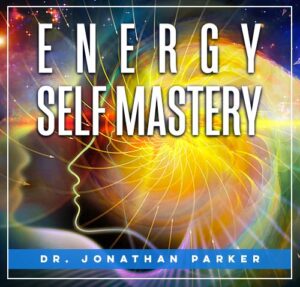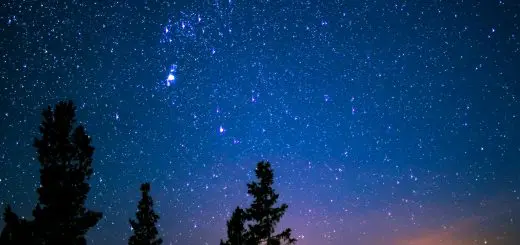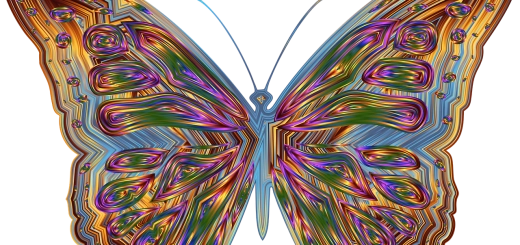Energy Grids: What Are They and How to Use Them?

Looking for more amazing products? Check out our online store and explore our collection here! Happy shopping!
Before diving in, please note: This post is for informational purposes only. If you’d like to know more about how we approach topics, feel free to check out our friendly Disclaimer Page.
Hey there, amazing readers! 
We’re committed to delivering quality posts, and your support (even just sticking around despite the ads) means everything to us. So, bear with us, and thanks for helping us keep the good vibes rolling. Now, on to the fun stuff!
TRANSLATE BUTTON AT THE END OF THE ARTICLE
A Quick Overview
Energy grids are often the unsung heroes behind the scenes, quietly powering our lives every single day.
They connect various sources of energy to homes and businesses, allowing us to turn on the lights, cook our meals, and charge our devices.
But what exactly are energy grids, and how do they work?
In this article, I’ll take you on a journey through the fascinating world of energy grids, breaking it down into bite-sized pieces to help you understand their importance, types, and how they affect our daily lives.
Understanding Energy Grids: A Simple Introduction
Energy grids are intricate networks designed to deliver electricity from producers to consumers.
Think of them like a giant web connecting power plants, substations, transformers, and homes.
When you flick a switch, you’re tapping into this vast system that transmits electrical energy across different regions.
At their core, energy grids consist of three main components: generation, transmission, and distribution.
Generation refers to the point where electricity is created, often at power plants using various sources like coal, natural gas, or renewable energy.
Next comes transmission, where high-voltage lines transport this electricity over long distances.
Finally, distribution networks deliver the power to your neighborhood and, ultimately, to your home.
These grids can extend across vast areas, sometimes spanning entire states or even countries.
Just imagine how many connections are involved when you think about how electricity travels from a wind turbine farm in Texas to your living room in New York.
It’s quite remarkable!
The Importance of Energy Grids in Our Daily Lives
Energy grids play a pivotal role in our everyday existence.
Without them, life would be drastically different.
Picture waking up and having no access to hot water for your morning shower, or trying to prepare breakfast without any power.
It’s a bit unsettling, isn’t it?
Here are a few reasons why energy grids matter:
Reliability: Grids provide us with a consistent power supply.
They ensure that when you need electricity, it’s usually there—day or night.
Economic Growth: A well-functioning grid supports businesses by enabling them to operate efficiently, which in turn fuels job creation and economic development.
Life Quality: Our daily comforts—air conditioning, heating, and cooking—depend on energy grids.
They enhance our quality of life in numerous ways.
Innovation and Technology: Grids support innovation by allowing new technologies to integrate seamlessly, such as electric vehicles and smart home systems.
Emergency Response: In times of crisis, such as natural disasters, energy grids can help coordinate responses and restore power swiftly, which is crucial for safety and recovery efforts.
So, next time you flip a switch, take a moment to appreciate the complex system that makes it all possible.
Different Types of Energy Grids Explained for Everyone
Energy grids don’t follow a one-size-fits-all approach.
They can be classified into several types based on their structure and operation.
Master your Energy and Awaken Your Spirit – start your journey here.
Let’s explore some of the main types:
Centralized Grid: The most common type, where a few large power plants generate electricity for a wide area.
This has been the traditional model, but it’s slowly changing.
Decentralized Grid: This setup uses smaller, local energy sources, like community solar panels or wind turbines.
It’s great for reducing transmission losses and increasing local resilience.
Microgrid: A microgrid can operate independently or in conjunction with the main grid.
They’re often used in remote locations or to provide backup power during outages.
Islanding Grid: This is a specific type of microgrid that can isolate itself from the main grid during emergencies, allowing it to keep functioning while the larger grid may be down.
Smart Grid: This advanced grid uses digital technology to manage the supply and demand of electricity more efficiently.
It helps optimize energy usage and integrates renewable sources more readily.
Each of these grids has its strengths and weaknesses.
The key is finding the right balance that meets local needs while promoting sustainability.
How Energy Grids Distribute Power Across Regions
So, how does power actually travel through these grids?
It all starts with generation.
Electricity is produced at power plants and then sent through high-voltage transmission lines.
These lines carry electricity over long distances, usually at voltages of 110 kV or higher.
Once the electricity reaches substations, it undergoes a transformation.
Here, the high voltage is stepped down to a safer level, typically 10 kV or lower, for distribution to homes and businesses.
This is the stage where the magic happens.
After stepping down the voltage, electricity travels through a network of distribution lines.
These lines branch out like a tree, delivering power to neighborhoods and individual homes.
From there, our household circuits distribute the electricity to various devices and appliances.
But how do we know if there’s enough power available?
Energy grid operators continuously monitor the flow of electricity and use complex algorithms to predict demand.
They adjust the supply by bringing additional power plants online or activating stored energy from batteries.
The Role of Renewable Energy in Modern Grids
Renewable energy sources are transforming how energy grids function.
Traditionally, fossil fuels dominated the landscape, but now wind, solar, and hydroelectric power are becoming significant players.
This shift introduces exciting possibilities and challenges.
Integrating renewable energy into the grid enhances sustainability, as these sources produce little to no greenhouse gas emissions.
However, they also come with variability—solar energy is only available during the day, while wind energy depends on weather conditions.
Energy grids must adapt to these fluctuations.
Here’s how they’re doing it:
Diverse Energy Mix: By combining various energy sources, grids can balance supply and demand more effectively.
Demand Response Programs: These encourage consumers to reduce or shift their power use during peak times, helping stabilize the grid.
Energy Storage: Batteries and other storage solutions can capture excess energy generated from renewables and release it when needed.
As we push for a greener future, energy grids are evolving to support this transition.
It’s an exciting time to be part of the energy landscape!
Smart Grids: The Future of Energy Management
Have you heard about smart grids?
They are like the cutting-edge siblings of traditional energy grids, bringing innovation and technology into the mix.
Smart grids use digital communications to enhance the efficiency and reliability of electricity distribution.
Imagine being able to monitor your energy usage in real-time or automatically adjusting your home’s power consumption based on grid demand.
That’s the beauty of smart grids!
Here are some key features:
Two-Way Communication: Unlike traditional grids, smart grids allow for two-way communication between utilities and consumers, providing valuable data for energy management.
Advanced Metering Infrastructure (AMI): Smart meters provide real-time information about energy consumption, enabling users to make informed decisions about their usage.
Integration of Electric Vehicles (EVs): Smart grids can manage EV charging, optimizing when and how much energy is drawn from the grid.
Enhanced Security: With modern cybersecurity measures, smart grids can better protect against potential attacks and vulnerabilities.
The future of energy management is bright with smart grids leading the way.
They open doors to a more efficient, interactive, and sustainable energy experience.
Master your Energy and Awaken Your Spirit – start your journey here.
Benefits of Using Energy Grids for Consumers
Using energy grids provides numerous advantages for consumers.
From convenience to cost savings, let’s explore some of these benefits:
Reliable Power Supply: Grids ensure that we have access to electricity when we need it, minimizing outages and disruptions.
Cost-Effective Energy: By allowing access to a larger market, grids can help reduce energy costs for consumers.
Access to Renewable Energy: Grids make it easier for users to tap into renewable sources, reducing their carbon footprints.
Informed Energy Choices: Smart grids provide consumers with real-time data, empowering them to make better decisions about their energy use.
Flexibility: With advanced technologies, users can adapt their energy consumption patterns to align with peak and off-peak rates.
In essence, energy grids can enhance our daily lives.
They offer reliability, choice, and the potential for cost savings.
How to Optimize Your Energy Use with Grids
Optimizing your energy use is not just about saving money; it’s also about reducing your environmental impact.
Here are some practical tips to help you make the most out of energy grids:
Utilize Smart Meters: If your utility provides them, use smart meters to track your energy usage.
This can help you identify patterns and areas for improvement.
Participate in Demand Response Programs: Take advantage of programs that reward you for reducing your energy consumption during peak periods.
Embrace Energy-Efficient Appliances: Consider upgrading to appliances that consume less energy.
They may cost more upfront but can lead to significant savings over time.
Use Renewable Energy: If possible, opt for green energy options offered by your utility or invest in solar panels for your home.
Adjust Your Habits: Simple changes, like turning off lights when you leave a room or unplugging unused devices, can make a big difference.
By becoming more mindful of our energy consumption, we can positively impact both our wallets and the environment.
Integrating Energy Storage Solutions in Grids
Energy storage solutions are critical for the success of modern energy grids, particularly as we increasingly rely on renewable sources.
They allow us to store excess energy generated during peak production times and release it when demand increases.
Here’s why they matter:
Balancing Supply and Demand: Storage can help even out the fluctuations caused by intermittent renewable sources, ensuring a steady supply of energy.
Improved Reliability: In the event of an outage or infrastructure issue, stored energy can act as a backup, keeping essential services running.
Cost Savings: By storing energy during off-peak hours when prices are lower, consumers can reduce costs by using that stored energy during peak hours.
Grid Stability: Energy storage helps maintain grid stability, reducing the risk of outages and keeping the system running smoothly.
The future of energy storage is bright, with technology advancing rapidly.
It’s an exciting time to watch how these solutions will shape the energy landscape.
Overcoming Challenges in Energy Grid Management
While energy grids are essential, managing them comes with its own set of challenges.
Here are a few hurdles that grid operators face:
Aging Infrastructure: Many grids rely on outdated equipment, requiring significant investments for upgrades to meet current demands.
Integration of Renewables: As more renewables come online, grid operators must find ways to balance their variable output with existing demand.
Cybersecurity Risks: With increasing connectivity comes the risk of cyberattacks, necessitating robust security measures to protect the grid.
Regulatory Hurdles: Navigating different regulations and standards can complicate grid management, especially in a decentralized energy landscape.
Despite these challenges, innovation and collaboration are paving the way for more resilient and efficient energy grids.
It’s all about finding solutions and adapting to change.
The Impact of Energy Grids on Sustainability Efforts
Energy grids have a profound impact on sustainability efforts.
They serve as the backbone of our energy system, influencing how we generate, distribute, and consume electricity.
Here’s how they contribute to a more sustainable future:
Renewable Energy Integration: Grids enable the widespread use of renewable sources, helping to reduce reliance on fossil fuels.
Energy Efficiency: By optimizing energy distribution, grids minimize losses and promote more efficient usage of resources.
Reduced Carbon Footprint: The more we can shift to cleaner energy sources, the lower our collective carbon emissions will be.
Community Resilience: Localized energy solutions, such as microgrids, empower communities to become more self-sufficient and resilient in the face of disruptions.
As we strive for a sustainable future, energy grids hold the key to unlocking a cleaner, more efficient energy system.
Together, we can create a better environment for generations to come.
Getting Involved: How You Can Support Energy Grids
Want to make a difference?
There are plenty of ways you can support energy grids and contribute to a better energy future:
Stay Informed: Keep up with energy news and developments in your area.
Understanding the challenges and opportunities can help you become an informed advocate.
Support Renewable Energy Projects: Look for local initiatives that promote renewable energy development and consider investing in or participating in such projects.
Engage with Your Utility: Many utilities offer programs that allow customers to participate in demand response or renewable energy options.
Get involved!
Advocate for Policy Changes: Support legislation that promotes renewable energy, energy efficiency, and grid modernization.
Share Knowledge: Talk to friends and family about the importance of energy grids and sustainability.
The more people know, the better our chances of making a positive impact.
Let’s rally together and support the energy systems that power our lives.
Every action counts!
Conclusion
Energy grids are vital for our modern society, facilitating the generation, distribution, and management of electricity.
They enhance our quality of life, support economic growth, and play a crucial role in sustainability efforts.
By understanding how they work and taking steps to optimize our energy usage, we can all contribute to a more efficient and greener future.
Whether it’s embracing renewable energy, supporting innovative technologies, or getting involved in local initiatives, every effort matters.
Together, we can help shape the future of energy for the better!

The Enlightenment Journey is a remarkable collection of writings authored by a distinguished group of experts in the fields of spirituality, new age, and esoteric knowledge.
This anthology features a diverse assembly of well-experienced authors who bring their profound insights and credible perspectives to the forefront.
Each contributor possesses a wealth of knowledge and wisdom, making them authorities in their respective domains.
Together, they offer readers a transformative journey into the realms of spiritual growth, self-discovery, and esoteric enlightenment.
The Enlightenment Journey is a testament to the collective expertise of these luminaries, providing readers with a rich tapestry of ideas and information to illuminate their spiritual path.
Our Diverse Expertise
While our primary focus is on spirituality and esotericism, we are equally passionate about exploring a wide range of other topics and niches 

To ensure we provide the most accurate and valuable insights, we collaborate with trusted experts in their respective domains 
Our blog originally focused on spirituality and metaphysics, but we’ve since expanded to cover a wide range of niches. Don’t worry—we continue to publish a lot of articles on spirituality! Frequently visit our blog to explore our diverse content and stay tuned for more insightful reads.
Hey there, amazing reader! 
Check out our store here and take a peek at some of our featured products below! Thanks for being awesome!














